Bulletin E367
Eastern coyotes (Canis latrans var.) first arrived in New Jersey as recently as 80 years ago, and they can now be found in almost every municipality across the state. This highly adaptable and secretive species plays an important ecological role in New Jersey by partially filling the niche left behind by grey wolves (Canis lupus), which were extirpated from the state in the 1800s. Despite the increase and expansion of coyotes throughout New Jersey, reports of coyote-related damage have remained relatively low because coyotes are naturally wary of people, and they rarely act aggressively or cause property damage. However, as coyote populations continue to expand, understanding coyote ecology and behavior can help to not only successfully manage the population but reduce negative human-coyote interactions.
History of Coyotes in New Jersey
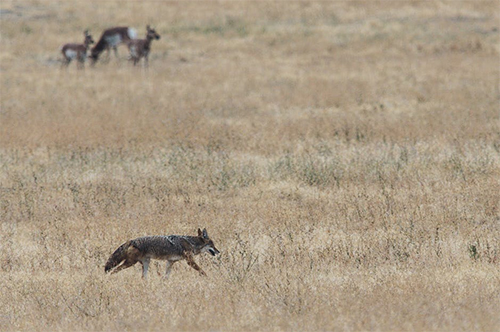
Figure 1: A coyote roaming a prairie in the western United States. Photo credit: Brett Sayles.
Prior to 1900, coyotes were found only in the prairies and deserts of central and western North America (Figure 1). Largescale anthropogenic landscape alterations due to logging and agricultural development, combined with wolf extermination campaigns across the country, allowed coyote populations to expand their range throughout the United States and Canada. The subspecies now occupying the northeast is referred to as the eastern coyote, having originated from the Great Lakes region. Genetic research has shown that eastern coyotes contain a mixture of DNA from the western coyote, grey wolf, eastern wolf (Canis lycaon), and domestic dog (Canis lupus familiaris). Evidence suggests that these interspecific pairings took place many generations ago, and it is unlikely that eastern coyotes are currently breeding with dogs or wolves. Therefore, the terms ‘coywolf’ and ‘coydog’ made popular by the media do not accurately describe the eastern coyote, but this diverse genetic background likely facilitated the coyote’s rapid expansion and adaptation to northeastern forests.
The first documented coyote sighting in New Jersey took place in Hunterdon County in 1939, and the first verified report occurred in 1948 in Cape May County. Currently, coyotes have been reported in 453 New Jersey municipalities covering 96% of the state’s land area. Because coyotes are so elusive, it is difficult to estimate their population size in New Jersey, but they likely number in the thousands. The Division of Fish and Wildlife has reported that the coyote population in the state is increasing, based on the number of coyote sightings, vehicle mortalities, and hunting and trapping reports which are compiled each year. These data show that coyote populations are highest in forested regions including the Pine Barrens and the northwest portion of the state.
Eastern Coyote Ecology and Behavior
Description
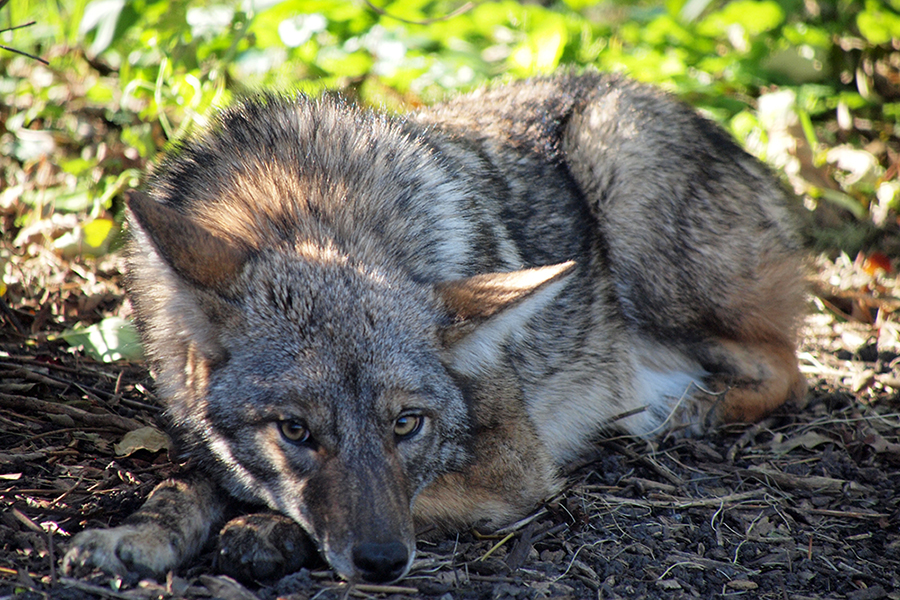
Figure 2: A resting coyote with typical coloration. Photo credit: John Picken.
There are 16 recognized subspecies of coyote that currently occupy North America. Each subspecies possesses minor morphological variations in coat color and body size. In general, coyotes have predominantly grey colored coats, but eastern coyotes can be greyish brown, red, or blonde, with lighter fur on their legs, throat, and underbelly (Figure 2). They have bright yellow eyes, a black nose, and large, pointed ears. Their tail, usually held in a drooping position, is bushy with a black tip and measures half the animal’s body length. Typically, coyotes are about 3–4.5 feet long and have a standing shoulder height of 20–24 inches, which is comparable to a medium-sized dog. Because of their historical hybridization with wolf and domestic dogs, eastern coyotes are considerably larger than their western counterparts. With broader and larger heads, adult males can weigh between 30–45 pounds, while females weigh between 26–40 pounds. Coyotes found outside of the northeast weigh between 19–30 pounds.
Diet and Feeding Habits
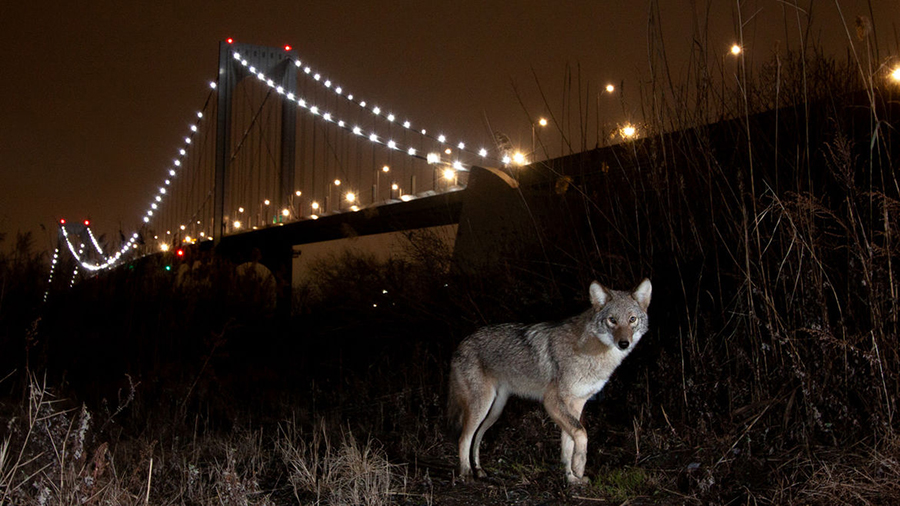
Figure 3: Coyote seen in the Bronx, New York. Photo Credit: Ivan Kuraev.
One of the critical factors contributing to the adaptability of coyotes is their diverse diet. As opportunistic omnivores, coyotes consume a wide array of prey, from animals as small as insects, frogs, and voles, to beavers, raccoons, and young or injured deer. When meat is not available, coyotes will readily consume many different fruits, nuts, and eggs. Contrary to popular beliefs, coyotes residing in densely developed areas (so-called, urban coyotes; Figure 3) tend to maintain a natural diet and rarely scavenge through human garbage. A scat analysis study performed on urban coyotes found that the most common food sources were small rodents (42%), fruit (23%), deer (22%), and rabbits (18%), with human refuse making up just 1.3% of the diet. Although unnatural food sources are not preferred, a hungry coyote will take advantage of easily accessible food items in residential communities, such as pet food and bird seed.
Reproductive Biology
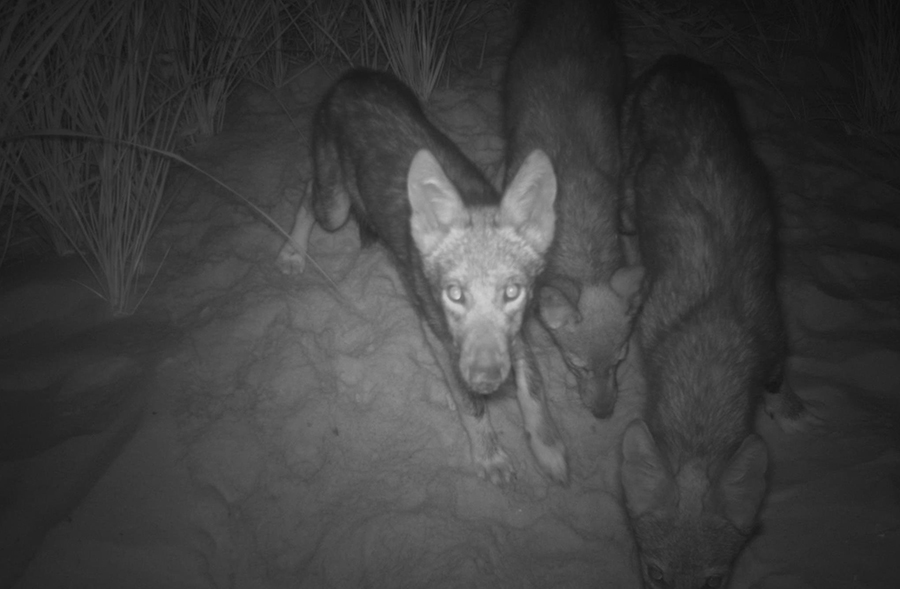
Figure 4: Coyote pups documented on a New Jersey beach. Photo Credit: Christian Crosby.
Coyotes do not form large packs like wolves; their basic social unit includes a mated pair and occasionally the pair’s young-of-the-year. Coyotes use a wide variety of yips, barks, and howls to communicate with each other, and this communication probably functions to defend territories and solidify family bonds. From January to March, coyotes are highly active across the landscape as they search for mates, and the pair bonds made during this time can last many years or for the life of the mate. Mating occurs in February or March, and the gestation period lasts 60-63 days. Females give birth to pups inside a den, which can be dug out by the female but is more commonly an existing space, such as an abandoned animal burrow, tree cavity, or rocky crevice. Litter sizes typically average 4 to 7 pups but can range from 1 to 12. Consistent with other socially monogamous species, both sexes provide food and protection for the pups. Pups are fully weaned between 5 and 9 weeks old, and they begin traveling short distances away from the den with the adults. Later in the summer, young coyotes begin learning to hunt independently, and by early fall, they disperse to a new home range (Figure 4). On some occasions, juveniles will stay with their parents for an additional year. Coyotes enter their first reproductive cycle at 10 months of age, but most individuals do not breed until they are 2 years old. Coyotes can live up to 10–14 years in the wild.
Ecological Significance
As mentioned earlier, coyotes partially fill an important ecological niche left by the gray wolf, which was extirpated from most of the northeast by the mid-1800s. Although wolves generally preferred larger prey, both wolves and coyotes prey upon small mammals (i.e. rodents and rabbits), helping to suppress populations in both agricultural and residential settings. Coyotes do hunt white-tailed deer fawns in the spring and summer and will occasionally predate a vulnerable adult deer. However, studies have shown that coyote predation does not have a large effect on white-tailed deer population levels.
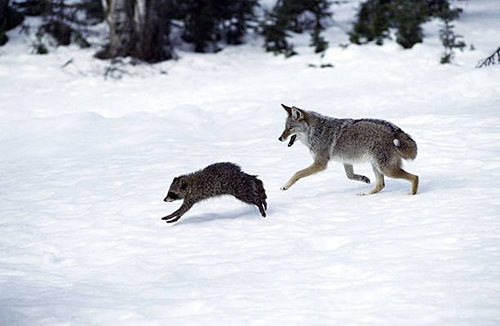
Figure 5: A coyote hunting a raccoon. Photo credit: Tom Brakefield.
Coyotes may also help suppress numbers of ‘mesopredators’, such as red fox, raccoons, and feral cats (Figure 5). These species thrive in fragmented habitats and suburban/urban areas, and when not regulated by a top predator, can have devastating effects on populations of songbirds, shorebirds, and turtles. Mesopredators often avoid habitats occupied by coyotes, resulting in reduced predation pressure on lower trophic levels.
Hunting and Trapping
Coyotes in New Jersey were given furbearer status in 1980 and game animal status in 1997, allowing them to be trapped and hunted. During the 2018–2019 trapping season, 144 coyotes were harvested, with the average price of coyote pelts valued at $28.39.
Coyote trapping season runs from mid-November to mid-March, and there is no daily or seasonal bag limit. All traps must be tended once every 24 hours, preferably in the morning. Coyotes may be captured using live-capture cable restraints following New Jersey Division of Fish and Wildlife guidelines. It is illegal to possess or use any steel-jawed leg-hold type trap anywhere in New Jersey.
New Jersey has three coyote hunting seasons: bow-only season runs from late September to early November; general season (firearm or bow) runs from early November to mid-March; and special permit season runs from January 1 to mid-March. The use of predator calls and decoys are allowed in all three seasons, while baiting and the use of dogs is prohibited during special permit season. Daily bag limit is unlimited for all three seasons. In addition to the coyote seasons, properly licensed hunters may legally harvest coyotes if encountered incidentally during the turkey season and during the established Six-Day Firearm, Permit Muzzleloader and Permit Shotgun deer seasons, before the hunter has taken the daily bag limit of deer.
Refer to the current year’s New Jersey Hunting and Trapping Digest for more detailed rules and regulations regarding coyote hunting and trapping.
Human-Coyote Coexistence
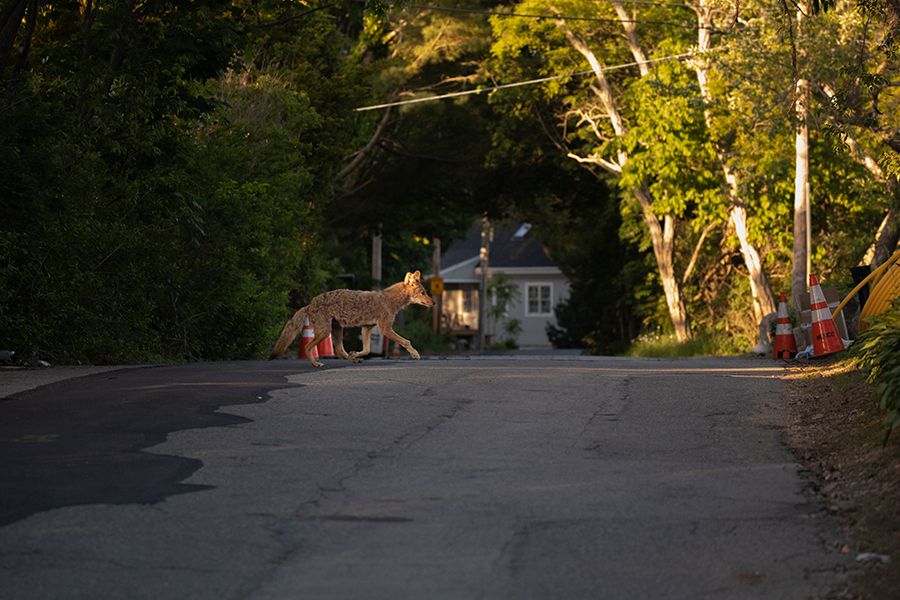
Figure 6: A coyote traveling through a residential neighborhood during the day. Photo credit: Ivan Kuraev.
Coyote populations are expanding throughout New Jersey, increasing the likelihood of coyotes living in or near developed areas. Despite this increase, reports of coyote-related damage have remained relatively low. Coyotes are naturally wary of people, and they rarely cause property damage or act aggressively. Coyotes are most active between dusk and dawn, but observing a coyote during the day does not mean it is sick or acting abnormally (Figure 6); coyotes are opportunistic and will feed on available food items, despite the time of day. In most cases, coyotes are secretive and will avoid people completely.
Residential Areas
Coyotes avoid human interaction in most cases. Direct coyote-human interactions are uncommon but can occur if a coyote has lost its natural fear of people (habituation), which occurs when wild animals associate humans and developed areas with access to food. Unsecured garbage cans, compost piles, bird seed, and pet food are easily accessible food resources that can promote repeat visits by coyotes. Removing these food sources can reduce the potential for negative coyote-human interactions. Because small pets and livestock may be targeted, ensuring that pets are not left outside unattended and livestock housing is properly secured will significantly lower the risk of coyote predation. Intentional feeding of wildlife should not occur.
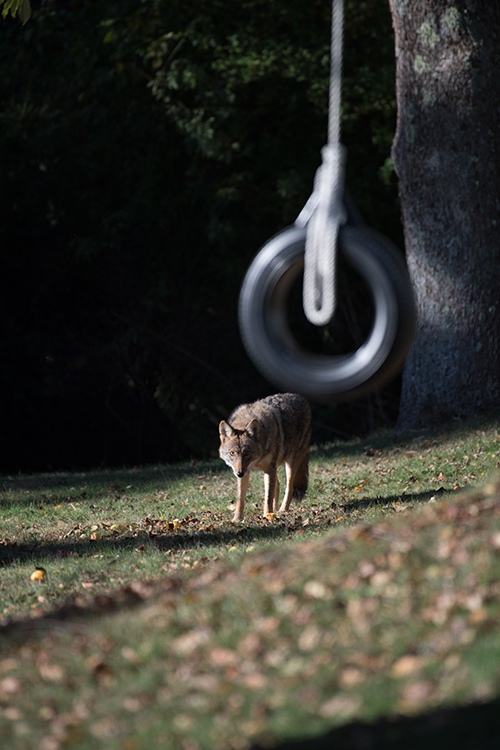
Figure 7: A coyote in a suburban backyard. Photo Credit: Ivan Kuraev.
Encountering a coyote that does not display wariness towards people may be unsettling, but it typically does not indicate a dangerous situation (Figure 7). Being proactive can help to re-instill a fear of humans. A recommended approach is to show dominance by standing tall, waving one’s arms, shouting loudly, and maintaining eye contact until the animal backs away. If the coyote does not react to these actions, ‘hazing’ the animal by throwing objects such as sticks, balls, or rocks in the coyote’s direction, or by spraying it with a hose, can be attempted. These techniques should not be intended to harm the animal, but rather to communicate that it is not welcome. If coyote encounters are more common in your area, it is advisable to carry non-conventional deterrents to make hazing more intense, such as air horns or spray bottles with a vinegar solution. A coyote might have to be hazed multiple times for it to leave a property permanently.
It is important to note that encountering an aggressive coyote is extremely rare. Signs of aggression include snarling, growling, or lunging (similar to aggressive behavior by a domestic dog). If this occurs, residents should call the police or local animal control agency immediately.
Management Strategies
Exclusion
Coyotes are able to dig under and climb over many types of fencing. Fences should be at least 5–6 feet high, with 4–6 inches of fence buried below ground and at least 12 inches extending away from the fence underground. An additional 12–18 inches of fencing should be installed at the top and slanted outward to help prevent coyotes from scaling the fence. Because fencing can be expensive to install and maintain, targeted installation around high-valued areas such as gardens and livestock enclosures may be the best option. In addition, sealing off openings underneath decks, porches, and sheds can discourage coyotes from using these areas as denning sites.
Aversive Conditioning/Repellents
Sound, visual, and odor repellents may be a short-term solution for keeping coyotes away from a particular area. However, coyotes will quickly adapt to these stimuli and they are not a long-term solution.
Trap and Relocation
Trapping and relocating eastern coyotes to a new location is not a viable solution in New Jersey. Studies have shown that survival rates are low for adults relocated outside of their original home range and habitat preference, and can lead to the spread of disease. More information on the relocation of coyotes and other wildlife in New Jersey can be found on the New Jersey Division of Fish & Wildlife website (PDF).
Lethal Methods
New Jersey law states that property owners experiencing property damage, or farmers experiencing crop and livestock damage due to coyotes may kill them at any time of the year using legal firearms, ammunition, and other lawful procedures subject to state law and local ordinance. All killed coyotes must be reported to a regional Division of Fish and Wildlife law enforcement office within 24 hours. NOTE: Many towns prohibit weapon discharge of any kind; therefore, other management options should be explored.
References
- United States Department of Agriculture. Animal and Plant Health Inspection Service, Wildlife Services. 2002. Urban and Suburban Coyotes. aphis.usda.gov/wildlife_damage/nwrc/downloads/urban_suburban_coyotes.pdf
- Benson, J.F., Loveless, K., Rutledge, L.Y., and Patterson, B.R. 2017. Ungulate predation and ecological roles of wolves and coyotes in eastern North America. Ecological Applications. 27(3): 718-733. DOI: 10.1002/eap.1499
- Bonnell, M.A. and Stewart, B. 2016. Using coyote hazing at the community level to change coyote behavior and reduce human-coyote conflict in urban environments. Proceedings of the Vertebrate Pest Conference. 27: 97-102. DOI: 10.5070/V427110354
- New Jersey Division of Fish and Wildlife. The Coyote in New Jersey. Burnett, A.W. nj.gov/pinelands/about/events/handouts/handouts/2017%20Coyote_Pinelands%20Short%20Course_March%2011%202017.pdf
- Gompper, M.E. 2002. Top Carnivores in the Suburbs? Ecological and conservation issues raised by colonization of north-eastern North America by coyotes: the expansion of the coyote's geographical range may broadly influence community structure, and rising coyote densities in the suburbs may alter how the general public views wildlife. BioScience. 52 (2): 185–190. DOI: 10.1641/0006-3568
- Henger C, Herrera G, Nagy C, Weckel M, Gormezano L, Munshi-South J. Genetic diversity and relatedness of a recently established population of eastern coyotes (Canis latrans) in New York City. Urban Ecosystems. 2020;23(2):319-330. DOI: 10.1007/s11252-019-00918-x
- Heppenheimer, E., K.E. Brzeski, J.W. Hinton, B.R. Patterson, L.Y. Rutledge, A.L. DeCandia, T. Wheeldon, S. R. Fain, P.A. Hohenlohe, R. Kays, B.N. White, M.J. Chamberlain, and B. M. vonHoldt. 2018. High genomic diversity and candidate genes under selection associated with range expansion in eastern coyote (Canis latrans) populations. Ecology and Evolution, 8:12641-12655.
- Hody, J.W., and R. Kays. 2018. Mapping the expansion of coyotes (Canis latrans) across North and Central America. Zookeys. (759): 81-97. DOI: 10.3897/zookeys.759.15149
- Kays, R., A. Curtis, J.J. Kirchman. 2009. Rapid adaptive evolution of northeastern coyotes via hybridization with wolves. Biology Letters, 6(1). DOI: 10.1098/rsbl.2009.0575
- McBride, T. 2006. Coyote Management: An Integrated Approach. New Jersey Fish and Wildlife Digest 2006 Hunting and Trapping Issue, 20(1): 20-21.
- Monzon, J., R. Kays, and D.E. Dykhuizen. 2014. Assessment of coyote-wolf-dog admixture using ancestry-informative diagnostic SNPs. Molecular Ecology. 23(1): 182-197. DOI: 10.1111/mec.12570
- New Jersey Division of Fish and Wildlife. 2012. New Jersey Furbearer Management Newsletter. New Jersey Department of Enviornmental Protection, Trenton, NJ. nj.gov/dep/fgw/pdf/2012/furbearernews-winter12.pdf
- Sovada, M.A., A.B Sargeant, and J.W. Grier. 1995. Differential effects of coyotes and red foxes on duck nest success. The Journal of Wildlife Management, 59(1): 1-9.
- Way, J.G. and W.S. Lynn. 2016. Northeastern coyote/coywolf taxonomy and admixture: A meta-analysis. Canid Biology & Conservation, 19(1): 1-7.
- Way, J.G. 2007. A comparison of body mass of Canis latrans (Coyotes) between eastern and eastern North America. Northeastern Naturalist, 14(1): 111-124.
- White, A.L., and S.D. Gehrt. 2009. Coyote attacks on humans in the United States and Canada. Human Dimensions of Wildlife, 14:419 -432.
January 2021
Copyright © 2024 Rutgers, The State University of New Jersey. All rights reserved.
For more information: njaes.rutgers.edu.
Cooperating Agencies: Rutgers, The State University of New Jersey, U.S. Department of Agriculture, and Boards of County Commissioners. Rutgers Cooperative Extension, a unit of the Rutgers New Jersey Agricultural Experiment Station, is an equal opportunity program provider and employer.

